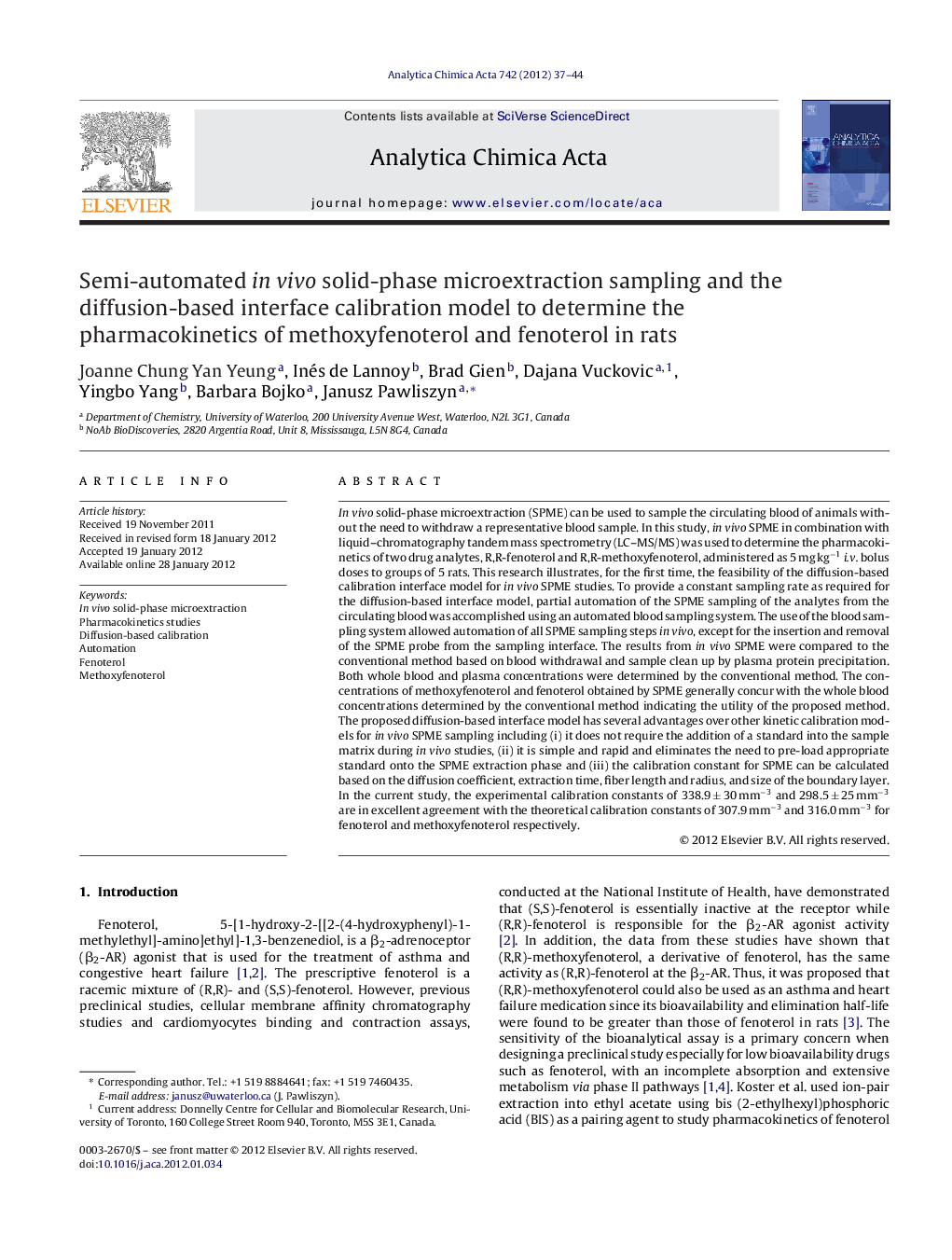| Article ID | Journal | Published Year | Pages | File Type |
|---|---|---|---|---|
| 1166197 | Analytica Chimica Acta | 2012 | 8 Pages |
In vivo solid-phase microextraction (SPME) can be used to sample the circulating blood of animals without the need to withdraw a representative blood sample. In this study, in vivo SPME in combination with liquid–chromatography tandem mass spectrometry (LC–MS/MS) was used to determine the pharmacokinetics of two drug analytes, R,R-fenoterol and R,R-methoxyfenoterol, administered as 5 mg kg−1i.v. bolus doses to groups of 5 rats. This research illustrates, for the first time, the feasibility of the diffusion-based calibration interface model for in vivo SPME studies. To provide a constant sampling rate as required for the diffusion-based interface model, partial automation of the SPME sampling of the analytes from the circulating blood was accomplished using an automated blood sampling system. The use of the blood sampling system allowed automation of all SPME sampling steps in vivo, except for the insertion and removal of the SPME probe from the sampling interface. The results from in vivo SPME were compared to the conventional method based on blood withdrawal and sample clean up by plasma protein precipitation. Both whole blood and plasma concentrations were determined by the conventional method. The concentrations of methoxyfenoterol and fenoterol obtained by SPME generally concur with the whole blood concentrations determined by the conventional method indicating the utility of the proposed method. The proposed diffusion-based interface model has several advantages over other kinetic calibration models for in vivo SPME sampling including (i) it does not require the addition of a standard into the sample matrix during in vivo studies, (ii) it is simple and rapid and eliminates the need to pre-load appropriate standard onto the SPME extraction phase and (iii) the calibration constant for SPME can be calculated based on the diffusion coefficient, extraction time, fiber length and radius, and size of the boundary layer. In the current study, the experimental calibration constants of 338.9 ± 30 mm−3 and 298.5 ± 25 mm−3 are in excellent agreement with the theoretical calibration constants of 307.9 mm−3 and 316.0 mm−3 for fenoterol and methoxyfenoterol respectively.
Graphical abstractFigure optionsDownload full-size imageDownload as PowerPoint slideHighlights► In vivo SPME was used for PK studies of fenoterol and methoxyfenoterol in rats. ► New diffusion-based calibration interface model was used for calibration. ► Automated sampling system was used for in vivo studies. ► This is the first time in vivo SPME was successfully used for studies of hydrophilic drugs.
